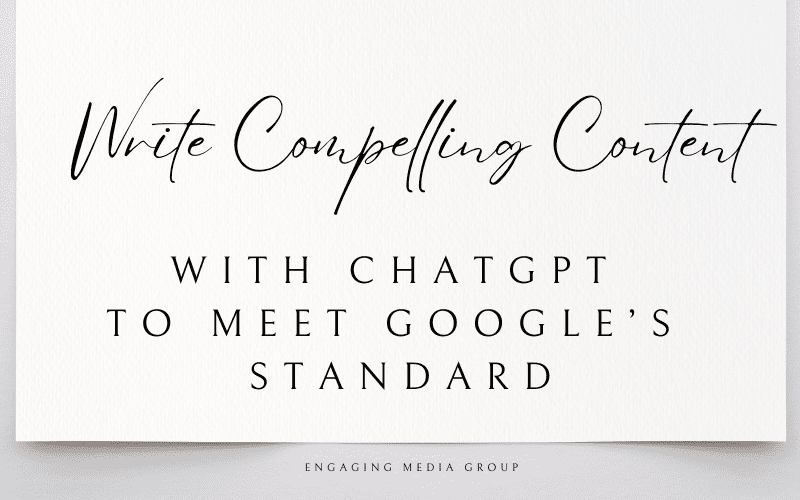In the ever-changing world of digital marketing, utilizing AI tools like ChatGPT can significantly impact content creation. To ensure that the content not only captivates your audience but also meets Google’s requirements, it’s crucial to adhere to specific guidelines. This article will provide insights on using ChatGPT to produce high-quality content that performs well on Google.
Understanding Google’s Content Guidelines
Before delving into the benefits of using ChatGPT, it’s important to grasp Google’s content guidelines. Google values content that is:
- Valuable and Relevant: Content should offer value to users by addressing their queries and meeting their needs.
- Original and Informative: Uniqueness is key. Google favors unique perspectives and in-depth insights over recycled information.
- Authoritative and Reliable: Content must be precise, well-researched, and supported by credible sources.
- User-Friendly: Content should be easy to comprehend and navigate, with clear headings, bullet points, and visuals where appropriate.
- Engaging: Engaging content keeps users on the page longer, lowering bounce rates and increasing the chances of sharing.
Using ChatGPT to Write High-Quality Content
Here’s a step-by-step guide to using ChatGPT effectively while meeting Google’s content standards:
- Define Clear Objectives
Before you start generating content with ChatGPT, outline your objectives. Define the purpose of the content, target audience, and key messages you want to convey. This helps guide the AI to produce relevant and focused content.
- Conduct Thorough Research
While ChatGPT can generate text based on prompts, it’s essential to provide it with accurate and up-to-date information. Conduct thorough research on your topic and gather credible sources. Input this information into ChatGPT to ensure the content it generates is accurate and authoritative.
- Craft Clear and Specific Prompts
The quality of the output from ChatGPT largely depends on the quality of your prompts. Be specific and clear in your instructions. For example, instead of asking, “Write about SEO,” ask, “Write a detailed guide on how small businesses can improve their SEO, including keyword research, on-page optimization, and backlink strategies.”
- Ensure Originality and Depth
Make sure to include prompts that seek different viewpoints, detailed analysis, and unique perspectives. Once you’ve generated the content, run it through plagiarism detection tools to verify its originality.
- Keep the Tone Natural and Engaging
One of the strengths of ChatGPT lies in its ability to emulate natural language. Leverage this by crafting prompts that encourage a conversational tone. For instance, prompt ChatGPT to write in a manner that’s simple to grasp and relatable for your audience.
- Structure Your Content for Easy Reading
Google values organized and easily digestible content. Instruct ChatGPT to use headings, subheadings, bullet points, and concise paragraphs. This not only enhances readability but also boosts SEO performance.
- Incorporate Multimedia Elements
While ChatGPT cannot generate images or videos, you can enrich the AI-generated content by including multimedia elements. Visual aids like infographics, charts, and images can enhance engagement and facilitate comprehension.
- Optimize for Search Engines
Integrate SEO practices into your content creation process. Ensure that target keywords are seamlessly woven into the text, particularly within headings and subheadings. Utilize meta descriptions, alt text for images, and internal links to enhance the visibility of your content on search engines.
- Review and Revise
It’s essential for a human to review and edit AI-generated content to guarantee accuracy, coherence, and consistency with your brand’s tone. Look out for inaccuracies, grammar issues, and any awkward phrasing that needs refining.
- Monitor and Fine-Tune
Once the content is live, utilize tools like Google Analytics and Search Console to track its performance. Keep an eye on metrics such as traffic, bounce rate, and engagement levels. Use this data to make tweaks and continuously enhance your content strategy.
In Conclusion
Leveraging ChatGPT for content creation can greatly streamline the process while upholding quality standards. By adhering to these guidelines, you can ensure that the content produced by ChatGPT meets Google’s criteria, adds value for your audience, and boosts your search rankings. Embrace AI’s potential, but remember the importance of human oversight and expertise for optimal outcomes.

